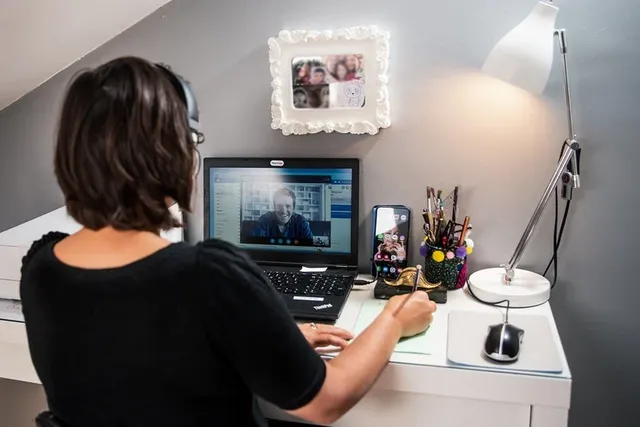
source:TELETRAVAIL.webp
Microsoft has published the results of the first annual report of the Business Environment Trends Index under the title “Hybrid Work Environment is the Future of Business - Are We Ready?”, Revealing seven trends for the hybrid work environment that business leaders should adopt during the next phase.
The report notes that business leaders must consider the hybrid business environment as the future of business, and require its permanent and sustainable adoption, as past assumptions about the future of business will become a thing of the past.
The report stated that the relationship and direct communication networks between employees and work teams have shrunk due to isolation, but the hybrid work system is capable of reinvigorating and strengthening them.
According to the data of the document, the number of meetings held has doubled worldwide, more than 40 billion emails were sent during the month of February compared to the same month of the previous year, and the work was humanized, with 40 percent indicating that they became more self-conscious. Compared to the situation before the pandemic.
According to the report's findings, the world is on the cusp of a new phase in the business world, with 73% of the employees surveyed preferring to continue flexible working options remotely.
Microsoft also reported that remote jobs have been announced on LinkedIn with a volume that is 5 times greater than the period recorded during the pandemic, and that more than 40 percent of the global workforce are considering leaving their jobs this year, and 46 percent are planning to move to new jobs. Now, where they can work remotely.
The report states that the flexible work environment will affect both employees who want to stay in their companies, as well as employees who are about to leave their jobs in the company, as well as new employees who will newly join the work environment.
The Business Trends Index 2021 report included the results of a survey of more than 30,000 people in 31 countries around the world, and other job indicators were analyzed across both Microsoft 365 and LinkedIn.
According to the report, there are seven trends of hybrid work that business leaders should take into consideration during the next phase:
• A flexible working approach will be fundamental to the future of business.
• The business leaders were not in direct contact with their employees and these circumstances provided an opportunity to reconnect them.
• High productivity hides a tired workforce behind the scenes.
• Generation Z (post-millennials) is at risk and needs to re-energize and energize.
• Shrinking networks of communication between employees and diminishing collective thinking among co-workers due to isolation threatens innovation.
• Confidence stimulates productivity and happiness.
• Talent is omnipresent in the hybrid work environment.
In addition to these trends, the report highlights the strategies that business leaders must undertake before moving to the next stage:
• Establishing a plan to enable employees to work with complete flexibility.
• Investing in technology to bridge the gap between the physical and digital worlds.
• Finding solutions to digital fatigue.
• Giving priority to rebuilding social and cultural capital.
• Reconsidering employees' experience to enable them to use their talents in new and varied ways.